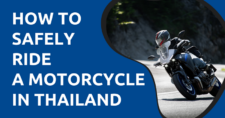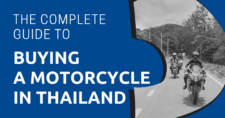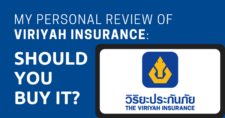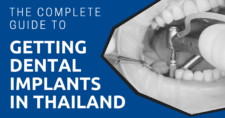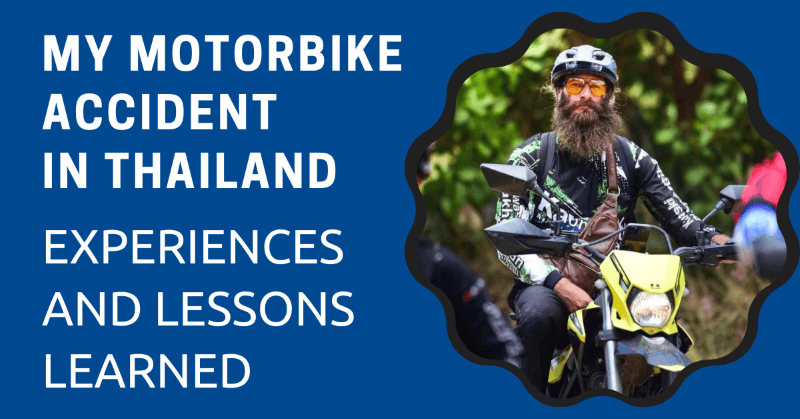
Three years ago, I moved to Thailand from the United States. If you’re familiar with Southeast Asia, you know the prevalence of motorcycles and scooters on the road.
Because of the high import tax, many Thai families, especially outside of cities, simply cannot afford a car.
Due to the high expense of cars and trucks, “motorbikes” (a general term used for both scooters and motorcycles) are one of the most common modes of personal transportation.
As a result, motorbikes are used for almost everything:
Daily commuting, grocery shopping, transporting multiple people (It’s not uncommon to see more than two people on one bike, (Including infants and children), and, of course, the always amusing spectacle of a dog as a passenger enjoying the ride.
Aside from carrying passengers of all ages and species, motorbikes are also utilized as workhorses for pulling side carts and street vending carts.
However, this story is not just about the convenience, thrills, and joys of riding a motorbike. It’s a cautionary tale of the inherent dangers that come with it and how I navigate the Thai healthcare system.
A lesson that I recently learned firsthand.
"*" indicates required fields
Disclaimer: This article may include links to products or services offered by ExpatDen’s partners, which give us commissions when you click on them. Although this may influence how they appear in the text, we only recommend solutions that we would use in your situation. Read more in our Advertising Disclosure.
Contents
- My Riding Experience
- My First Time Riding a Motorbike
- Buying My First Motorbike
- My First Accident
- Accident Statistics
- Helmet Laws
- The Accident
- Emergency Response Efforts
- Ambulance Response Time
- Cost of Ambulance
- Private Hospitals
- Mandatory Insurance
- Cost of Private Hospitals
- Government Hospitals
- My Saving Grace
- Post Operation
- Cost of Government Hospital
- Claiming the Mandatory Insurance
- Long Road to Recovery
- Lesson Learned
- Conclusion
My Riding Experience
Before moving to Thailand, I had never ridden a motorbike in my life. I’d always been interested in motor vehicles; however, my interest and passion in the States was more geared towards cars.
Not to say I was completely void of any interest in motorcycles. I simply never had the opportunity to ride, especially in a culture where motorcycles on the road are less prominent and are used predominantly as a hobby for weekend warriors.
However, if you plan to stay long-term in Thailand, it doesn’t take long to realize that riding a motorbike adroitly and safely is a valuable skill.
My First Time Riding a Motorbike
When I first arrived in Thailand, within a few weeks, I managed to get my hands on a motorbike.
It was an old, run-down Honda Wave I borrowed from my wife’s family.
For those unfamiliar with the Honda Wave, it’s a small motorbike powered by an air-cooled 125cc motor mated to a 4-speed semi-automatic transmission.
It was the perfect beginner bike—underpowered, clutchless shifting, lightweight, and easy to maneuver.
Buying My First Motorbike
After about a month of improving my riding skills and getting more confident riding through the hustle and bustle of Thailand… I grew tired of the old, run-down, underpowered Honda Wave and felt ready to buy my very own motorbike.
With the confidence gained from my time on the Honda Wave, I knew I wanted more power; the question was, how much more power? And what type of motorbike would best suit my needs?
Of course, my budget was a significant factor in making a decision.
However, an important consideration for me was not just a motorbike that would satisfy my expectations; I needed it to be practical for daily commuting.
Most Thais ride small automatic scooters as their daily commuters.
They are economical fuel-sippers, require very little maintenance with long service intervals, and are easy and comfortable to ride.
However, being a car enthusiast back in the States, I needed something a little more exciting… something that would feed my need for an adrenalin rush; at the same time, I didn’t want more power than I could handle.
The one thing I knew for sure was that I wanted to feel the visceral experience of revving through gears that I so desperately missed from having driven manual cars all my life.
While considering what motorbike would best meet my needs, I ultimately felt that having a big bike was impractical for daily commuting, as the large size and weight would pose a challenge for maneuvering through dense city traffic.
However, being six feet tall and weighing 180 lbs., I felt I needed something slightly bigger with a little more power than the typical small cc motorbikes commonly seen on the road.
I ultimately decided to buy a Kawasaki D-Tracker. For those unfamiliar with the D-Tracker, it’s essentially a street-oriented “motard” version of the Kawasaki KLX dirt bike.
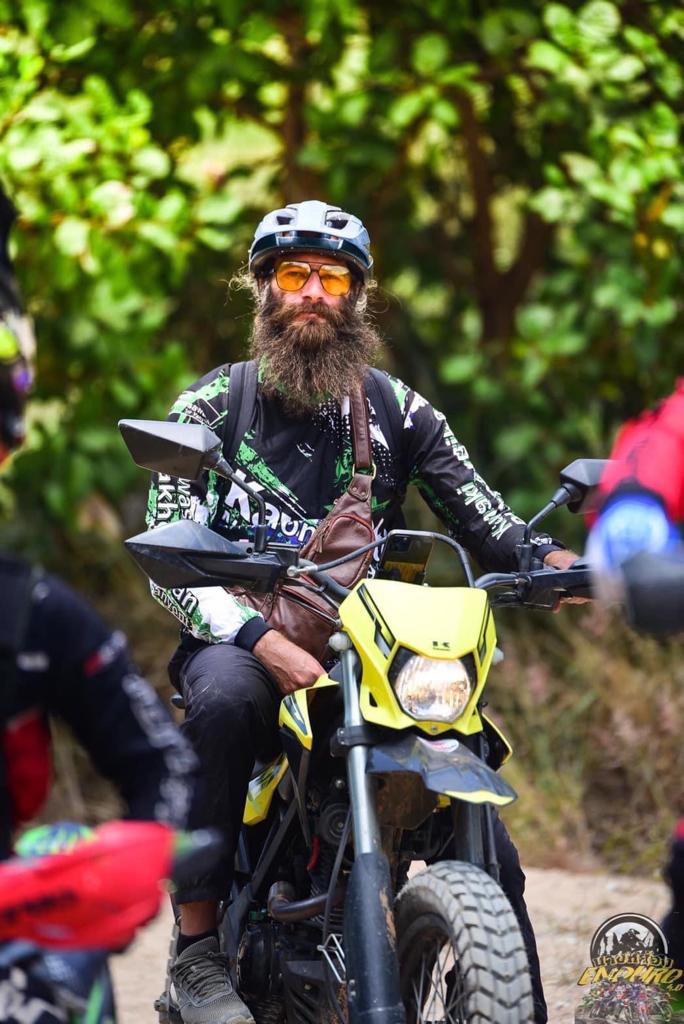
It’s a midsized bike that offered just enough power to quench my thirst for some get-up-and-go while being lightweight and nimble enough to traverse city traffic with confidence.
As a motorbike enthusiast, I can go on and on about why I chose this particular motorbike. But this story isn’t about my D-Tracker. It’s about my crash and how I dealt with it.
My First Accident
In the world of motorcycles, there is an old saying, “It’s not if you crash… it’s when you crash.”
That said, I had my first fall within a few months of riding my new motorbike.
Dirt on the road caused my tires to lock up while braking, causing me to get thrown over the handlebars.
Fortunately, this happened at a relatively low speed, and I was able to mitigate severe injury by rolling out of the fall.
I credit my ability to adequately roll out of falls to my many years of martial arts training, and by doing so, I only suffered a few scrapes and bruises.
However, this experience taught me a valuable lesson and ultimately made me a more cautious rider.
Over the years, my skill level and confidence grew, and it would be disingenuous to tell you that I haven’t pushed my limits when presented with “safe” opportunities and environments, such as closed courses and empty highways.
However, I am always very cautious and respectful and never ride recklessly on crowded roads.
Respect and maintaining an acute awareness are the best defenses to avoid accidents, mitigate risk, and, more importantly, ensure the safety of others.
Nonetheless, a universal defining notion of accidents is that no one plans for them to happen.
Accident Statistics
Before sharing my story, I want to state that my intentions are not to despair, deter, or impose fear regarding riding motorbikes.
Therefore, I won’t be presenting you with daunting accident statistics.
My only intention is to share my experience and the lessons I learned. Ultimately, it is your choice If you choose to ride.
Helmet Laws
In addition to getting a motorcycle license, Thailand law requires you to wear a helmet while riding a motorbike. However, speaking candidly, it’s not always heavily enforced—especially in small provinces and cities—consequently, many view wearing a helmet as a personal choice.
As I share my story, I choose to be transparent to help others make better choices.
That said, I admit I am frequently guilty of not always choosing to wear my helmet.
The Accident
The day of my accident was a typical afternoon. As usual, I decided to get lunch from one of my favorite restaurants near my house.
It’s a ride I have taken countless times, and I am very familiar with the area. That said, in the theme of transparency, I made the choice not to wear my helmet that day.
Boom! To this day, I still can’t explain why I didn’t see the truck coming. It happened so fast, yet it felt as if it was happening in slow motion.
For lack of a better explanation, it felt as if I was having an out-of-body experience as I watched myself get T-boned and hurtled through the air.
As my body proceeded to flip mid-air, I distinctly remember the feeling of my head ever so lightly grazing the road.
As I said, I was not wearing a helmet that day… some might call it luck… or perhaps some may call it divine intervention that I did not sustain a more serious head injury… I will leave this notion in the hands of my readers.
Regardless of what you call it, although I was very fortunate that day, I encourage everyone to always wear a helmet while riding.
Emergency Response Efforts
Thailand is no stranger to the harsh reality of motorbike accidents.
With my adrenaline pumping, I immediately stood to my feet and found myself surrounded by concerned bystanders.
They asked me if I was okay and gave me a chair to sit on.
Within minutes, a concerned citizen appeared with an emergency first-aid kit and proceeded to clean my wounds and informed me that he called for an ambulance and it was on its way.
Still in shock, I managed to call my wife to let her know I was okay and sent my location to meet me at the scene of the accident.
Ambulance Response Time
As you can imagine, response times can vary from many factors, such as the size of the city, rush hour traffic, and other unpredictable factors.
However, with my experience, an ambulance arrived in a matter of minutes. In fact, they arrived so fast they actually got there before my wife.
Cost of Ambulance
Being accustomed to the United States and knowing the extremely high cost of being transported via ambulance, I was apprehensive about getting in the ambulance.
However, moments later, my wife arrived at the scene and informed me that ambulances in Thailand were free of charge.
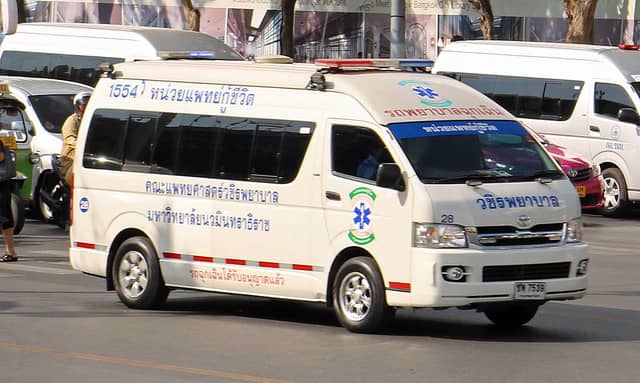
In fact, they are a city-funded program operated entirely by volunteers called Aar Saa-Guu Pai, which loosely translates to volunteer rescuers.
As with most volunteer programs in Thailand, it’s always nice to show them gratitude by giving them a tip as a token of appreciation.
Private Hospitals
With my adrenaline still pumping, I didn’t feel much pain and couldn’t tell the extent of my injuries.
However, it was evident I had numerous cuts and scratches that needed to be cleaned and bandaged.
Because my wife knows the long wait times of government hospitals, we decided to request that the ambulance take me to a local private hospital.
Upon arrival, I was promptly admitted to the emergency room.
Almost immediately, attentive nurses began to clean and bandage my wounds.
Next, they inquired about my medical history, such as pre-existing health conditions, and If I have any allergies or adverse reactions to certain medications.
At this point, my adrenaline was starting to wear off, so they administered pain medication through an IV.
They then proceeded to order X-rays for my right foot and leg, where I seemingly incurred most of my injuries.
It didn’t take very long for the doctor to see my X-ray results.
He informed me that other than a slight fracture in my foot, I had no broken bones.
Furthermore, he told me that the fracture is very small and may even be from an old previous injury.
This did not surprise me, as I incurred quite a few fractures and injuries from competing in full-contact fighting tournaments in my younger years.
At this point, it was hard to believe I endured such a severe crash with no serious injuries, and a wave of relief rushed over me. Unfortunately, this would prove to be short-lived.
Upon further examination, the doctor noticed something wrong with my right shoulder and immediately ordered another x-ray.
The x-ray showed a significant shoulder separation caused by a torn ligament.
The doctor informed me that the ligament was completely severed and would require reconstructive surgery.
Furthermore, I was advised that the surgery must be done within a strict time frame of three weeks.
The doctor explained if the surgery is not performed in time, the ligament would essentially deteriorate to a state beyond repair and present further complications.
Besides the timeframe, the doctor highly recommended that this specific surgery should be performed by a sports medicine specialist.
As you can imagine, the diagnosis of my injury was undoubtedly unnerving. Unfortunately, this was only the beginning of the challenges I would soon face.
Mandatory Insurance
By law, Thailand requires that all motorbikes must be insured. However, only minimal coverage is mandated.
For minimal coverage, the rate depends on the motorbike’s engine size, ranging from 150-650 baht yearly. (Roughly 5$-20$ USD)
It’s important to note that mandatory insurance only covers medical expenses for injuries caused by accidents and does not cover damage or theft of the motorbike.
Surprisingly, for such a low annual cost, the minimum insurance covers up to 30,000 Baht (approximately $1,000) per accident.
Cost of Private Hospitals
I will state from experience that private hospitals in Thailand provide exceptional health care and go above and beyond when it comes to your health and comfort.
That said, this comes at an expense. Like many things in Thailand, you get what you pay for, and as you can imagine, the price reflects the exceptional service they provide.
The private hospital quoted 230,000 Baht (approximately $7,000) for the operation.
They informed me that if I chose to do the surgery with them, they could schedule the operation within 48 hours.
Unfortunately, my insurance only covers 30,000 Baht (approximately $1,000)
As much as I appreciated their exceptional care, I simply could not afford it.
Government Hospitals
With the high expense of private hospitals, my only option was a government hospital.
Before I get into more details, I want to state that government hospitals provide the same level of health care as private hospitals. However, there are a few caveats.
Waiting Time
As you can imagine, government hospitals are very busy.
When registering as a new patient, be prepared to navigate an array of confusing bureaucracies and protocols.
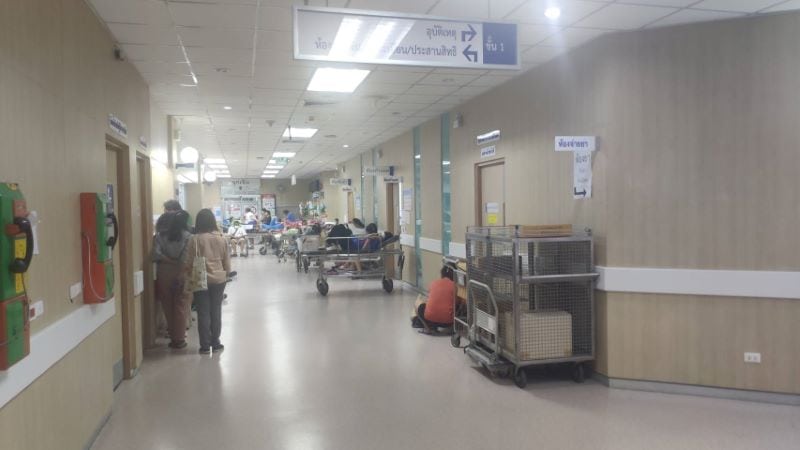
This proved to be quite overwhelming, even with the help of my Thai wife.
After a long tedious registration process, be prepared to wait many hours to see the doctor.
Surgery Waiting List
This is the caveat that truly sets private and government hospitals apart.
Regardless of the importance of having the surgery within the recommended 3-week timeframe, I was informed there is a long waiting list and that it would take months to schedule my operation.
This starkly contrasted private hospitals, which could schedule the operation within 48 hours.
My Saving Grace
As you can imagine, at this point, I felt very anxious and somewhat despairing.
One week has already passed, leaving me only two weeks to meet the timeframe for an optimal outcome of the operation.
However, my luck was about to turn around.
My wife called an old childhood friend for advice. As it turns out, they have a mutual friend from high school who happens to be a sports medicine surgeon!
Although they had not spoken since high school, my wife reached out to him and explained our situation.
Without hesitation, he called his professor, who happens to be a leading sports medicine surgeon at a government hospital in Bangkok.
And as a personal favor, his professor scheduled me an appointment to see him for the following week.
Long story short, on the day of my appointment, I only had one week left before the three-week timeframe for optimal surgery results.
I am incredibly grateful that he agreed to perform the operation himself and was able to schedule my surgery for the following day.
I was very fortunate and felt incredibly relieved. However, the moral of the story is not to boast the benefits of having the right connections.
My intention is to impart the lesson of the importance of being prepared for the unexpected, such as investing in a premium insurance plan that will cover the expenses of private hospitals.
Post Operation
After the operation, as a standard protocol, I was required to stay at the hospital for several days.
To be honest, between the strong painkillers and morphine, it was mostly a blur.
From what I can remember, the experience was typical of all hospitals.
The hospital beds featured remotely adjustable positioning and an intercom to call the nurse, and the food was terrible.
However, I was allowed to have outside food delivered to me, which helped keep my spirit up during my stay.
Cost of Government Hospital
It’s safe to assume, at this point, you are wondering how much government hospitals cost.
Before divulging my total cost of the operation, I will break down the prices of standard expenses.
Although it would be difficult to give a comprehensive breakdown of prices, I will attempt to walk you through it to provide you with an idea of what to expect.
Doctors fee
The cost to see a doctor was 100 baht (approximately $3)
X-rays
250 baht (roughly $7) per x-ray
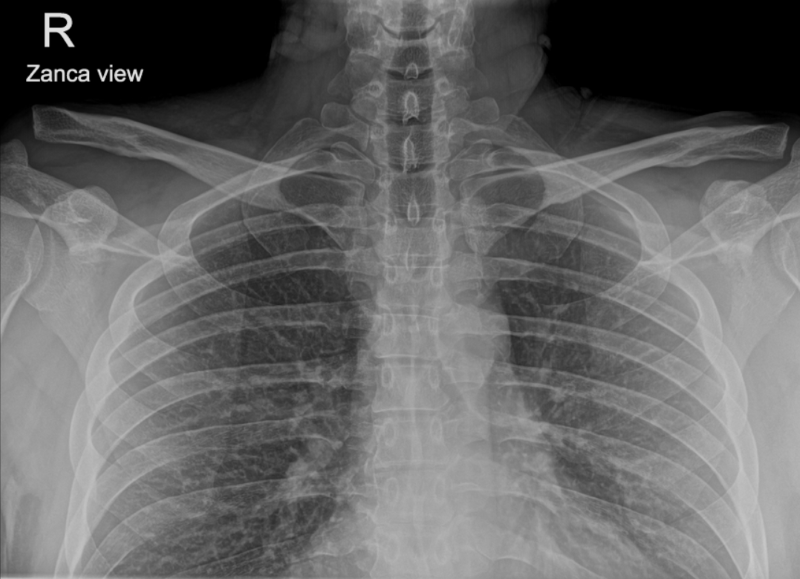
Pre-operation protocols
The total cost, including the doctor’s fee and standard pre-operation procedures such as blood work, an EKG test, and multiple X-rays, came to a total of 2,000 Baht (approximately $60).
Cost of the Operation
It’s important to note regardless of whether you have insurance or you are paying out of pocket; you will be required to pay the estimated quote upfront.
For my particular operation, I was quoted 80,000 baht. However, I was informed that the hospital overestimates quotes to ensure any unforeseen expenses are covered and that I would be refunded the difference of the exact expense the hospital incurs.
After the operation, including the cost of 6 days in the hospital, the total expense was 72,000 baht, and I was refunded accordingly.
Claiming the Mandatory Insurance
While my insurance company approved my claim, they necessitated that I cover all medical bills initially.
It’s important to note that these terms might vary based on the hospital or your specific insurance policy.
To secure a reimbursement, I was required to provide medical documents and receipts as evidence of my expenses.
When requesting documents from a government hospital, anticipate a processing time of about 10-13 days before you receive them.
Once you’ve submitted the required paperwork to the insurance company, expect a further wait of roughly 15-20 days before the reimbursement check is issued.
In my instance, the maximum payout from my policy was 30,000 baht.
Even though my actual medical bills surpassed this amount, I was grateful to recover a portion of the incurred expenses.
Long Road to Recovery
The reality is I have a long road to recovery, involving physical therapy and six months to allow my ligament to fully heal before I can return to doing the physical activities that bring me joy.
In fact, as I’m writing this, my surgery was only six weeks ago, and my surgeon only recently permitted me to start using my arm again for day-to-day activities.
With each keystroke, I endure the pain and discomfort of not yet being fully recovered.
Nonetheless, I decided to share my story now before it becomes a vague, distant memory, hoping that in some shape or form, sharing my experience may bring insight and value to others.
And to be honest, perhaps as a personal cathartic endeavor to help me face this challenge head-on, as it is easy to succumb to self-doubt and depression while enduring a difficult situation.
Lesson Learned
Navigating all the challenges and hurdles in my experience allowed me to gain many insights.
However, the standout lesson is the undeniable value of opting for a premium insurance policy.
Although everything worked out in the end, I still had to cover more than half of my medical expenses out of pocket.
Although government hospitals offer competent care, private hospitals stand out in terms of convenience and top-tier service.
Regardless of which country you’re in, prioritizing your health and safety is priceless.
Moving ahead, I’m inclined to opt for a policy that accommodates the higher costs associated with private hospitals. I hope never to draw upon it, but it’s a safety net worth having.
Conclusion
Life has a way of presenting us with unexpected challenges that test our strength, resilience, and determination.
My journey to recovery is still in its early stages, and every day brings its own set of hurdles and challenges.
As I traverse this long road, I find solace in sharing my determination to remain positive.
Not only to fortify my own spirit but as a reminder that we are not alone in our struggles.
Regardless of what challenges we face, by remaining positive, we can act as a source of inspiration.




